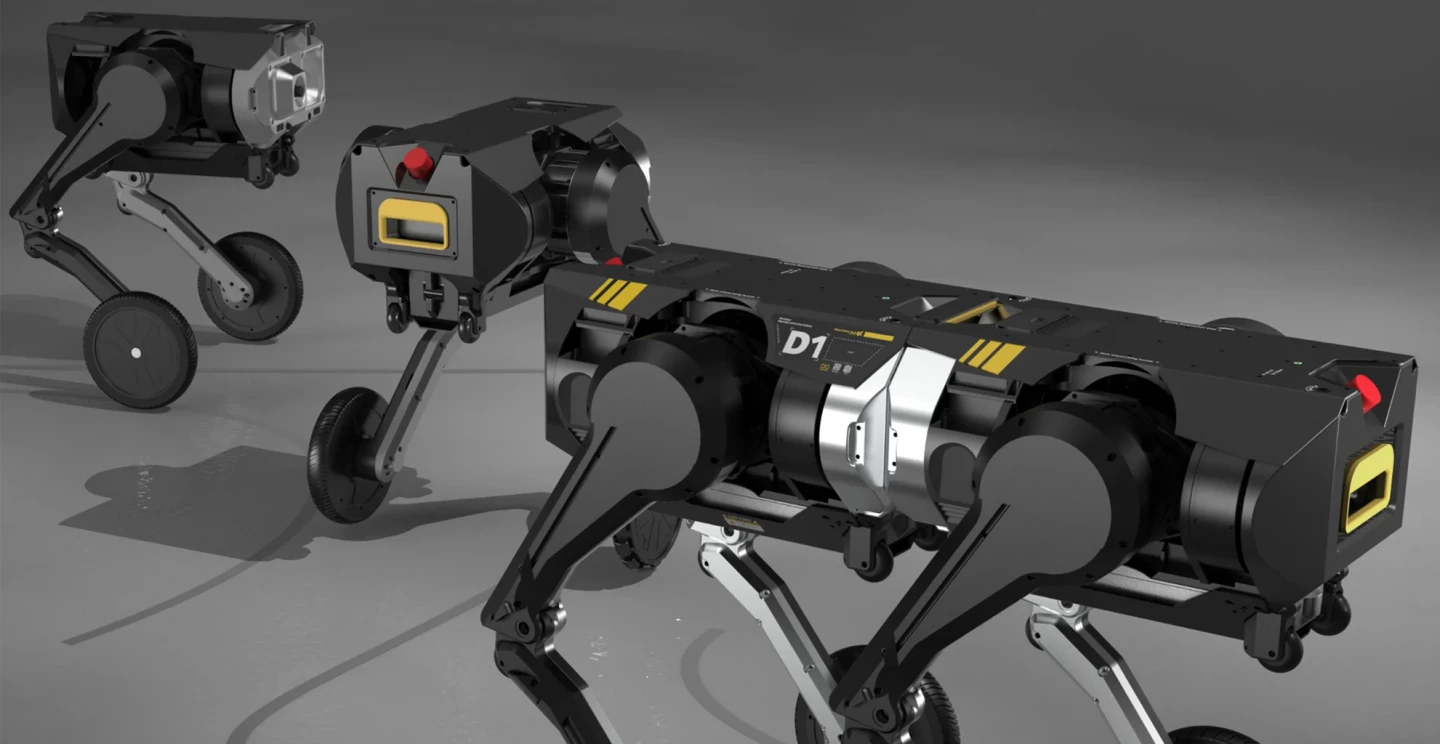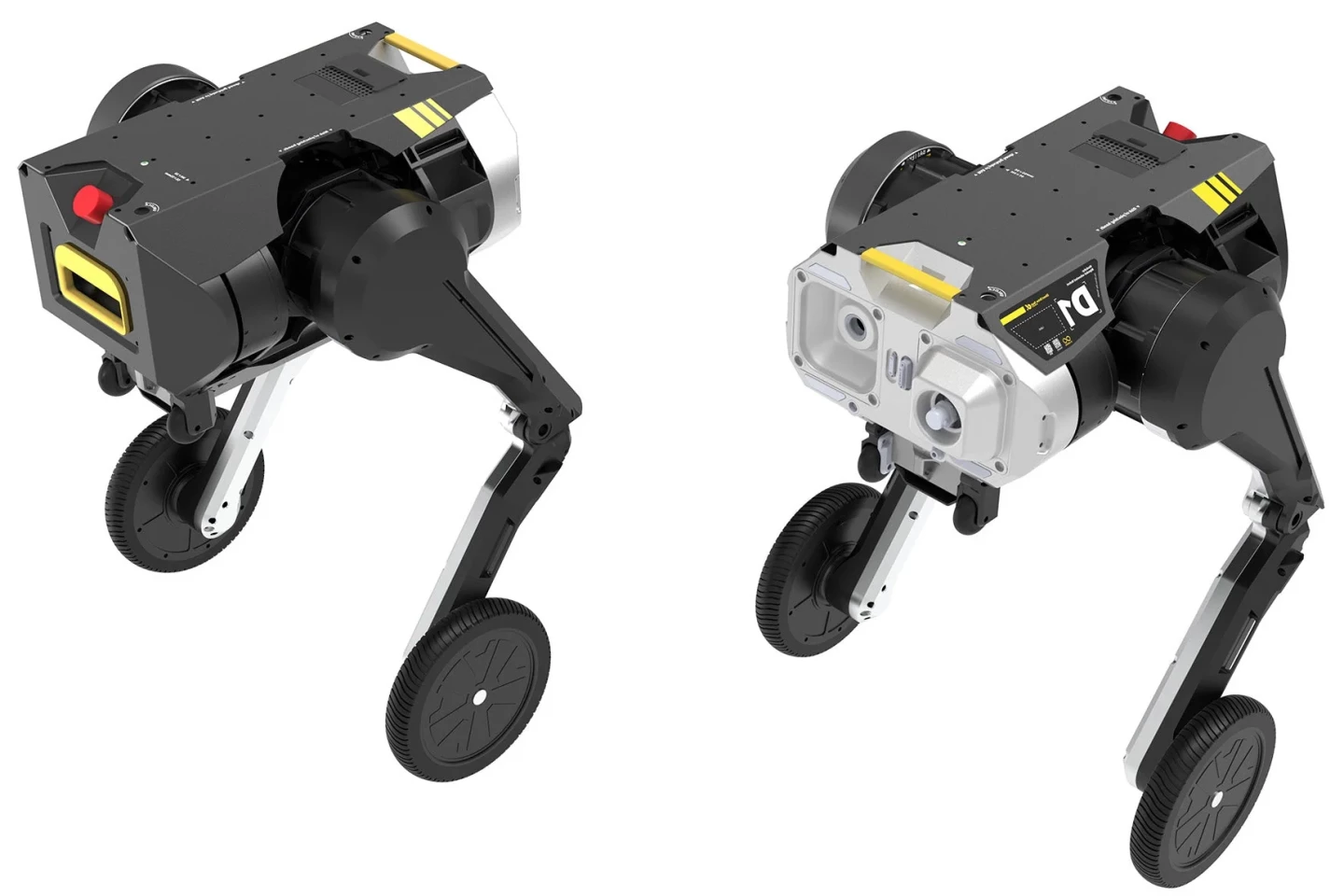It's now actually not that unusual to see quadruped robots that have powered wheels for feet, allowing them to either walk or roll as the situation dictates. The modular D1 is different, though, in that it can also operate as either one quadruped or two self-balancing bipeds.
"Traditional" quadruped robots excel at traversing uneven terrain, stepping over obstacles and even climbing stairs while maintaining four stable points of contact with the ground while doing so. If you give them lockable wheels for feet, however, they can zip across flat, smooth terrain much quicker and more energy-efficiently than they could by running.
Likewise, if the ground is flat enough to allow them to balance on just two legs, a lot of weight and energy usage can be saved by not bothering to include the other two legs. That's why some companies are now offering self-balancing biped robots.
However, in the random and chaotic real world, there are likely going to be some situations where you can get away with a nimbler, more efficient biped, and others where a more sure-footed quadruped is required. That's why Hong Kong robotics company Direct Drive Technology created the D1.

In its four-legged form, the robot looks and performs much like previous offerings from rival companies such as Swiss Mile. However, thanks to a magnetic coupler in the middle of its body, it can separate into two independent biped units on demand. It can even perform tasks in which those two units start off separate, then join together without any hands-on human help.
According to Direct Drive, each biped bot section weighs 24.3 kg (53.6 lb), has a maximum rolling speed of 11 km/h (7 mph), and can run for over five hours per two-hour charge of its 43.2V/9-Ah lithium battery.
Brains-wise, each section packs a Jetson Orin NX 8GB processor running the Ubuntu 22.04 operating system. This setup allows for both remote and autonomous control.

Linked together to form a quadruped, the two bipeds can carry a maximum payload of up to 100 kg (220.5 lb). Suggested applications for the robot include security patrolling, short-distance delivery, search-and-rescue, and mobile filming.
If you want a D1 for yourself and think a single biped will meet your needs, you can get one for US$7,499. If you want two, so you can make a quadruped, it'll cost you $13,999. Peripherals such as cameras are extra.
Check out the D1 in mighty morphin' action, in the video below.
Source: Direct Drive Technology






